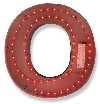Download a PDF version of this article (220 KB)
Lighting systems manufacturer GELcore recently added white to the range of colors for its GE Tetra product line, which is used as a replacement for neon in channel letters and other architectural lighting applications in markets such as retail, restaurants and hospitality.
Rugged design
One of the principle advantages of LEDs compared with neon is ruggedness and durability, and Tetra has been designed to enhance these characteristics. The Tetra system uses square Piranha LED packages that snap into rugged modules, creating the sign industry's first patented LED design that does not use printed circuit boards. This eliminated the need for added electronic components such as resistors and capacitors. "We look at total potential failure points, and systems that eliminate PCBs and don't have solder points are much less likely to fail in a demanding environment such as an outdoor sign," explains DeMarco.
Longer runs
Tetra strips are packaged in reel form and can be cut to any desired length. GELcore also sells splice connectors that allow simple and rapid connection of supply wires to the Tetra strips. Addressing the need for longer runs in some applications, the new GE Tetra XL is capable of operating up to 160 feet of LED lighting from a single 12 V power supply. "This has proved popular with installers and end-users, as it means there will be fewer building or wall penetrations, and installation can be quicker and easier," says DeMarco. "The power supply can be remotely mounted up to 150 feet from the installation, and fewer power supplies can be used in some situations."Comparison with neon
As mentioned above, LED-based systems are much more robust than neon, not only when building the system but also during transportation and installation. Also, rather than replacing entire sections of neon signs, minor modifications can be made on site.
Another disadvantage of neon is that light is given off in all directions and a large amount is wasted. Although LED systems like Tetra have a much lower lumen output, the light is all directed at the channel letter face rather than at the back or sides of the channel.
As with any LED system, cost is a major issue. "When end-users look at the complete installed cost, factors like lower labor costs during installation and a lack of breakages weigh heavily for LEDs," says DeMarco. "The cost equation is strongest for warmer colors, and red LED-based systems are virtually on a cost parity with neon."
LED-based channel letter systems currently have around 5-6% of the market according to a recent survey, and experienced double-digit growth over the previous year. Most of this is for new construction, although DeMarco says that the Tetra system is very well suited for retrofit installations. As the volumes increase and LED prices continue to fall, the advantages of LEDs for this application will ensure that market penetration continues to grow rapidly.










